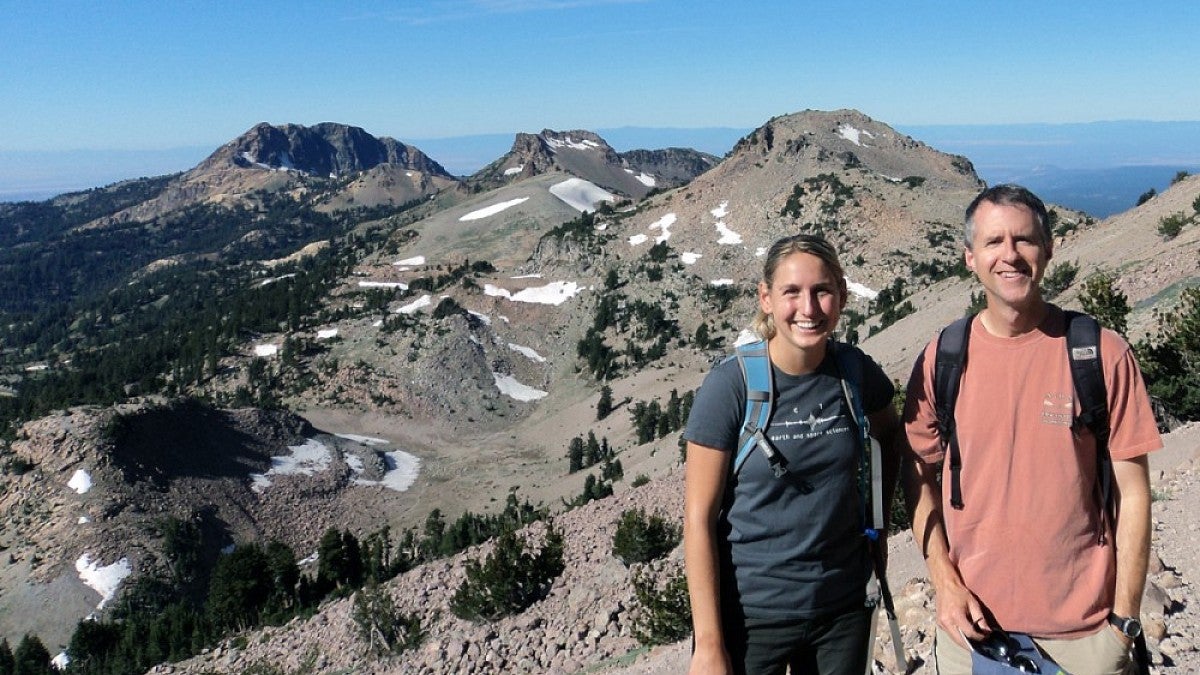UO graduate teaching fellow Kristina J. Walowski loves volcanoes and teaching undergraduate students. She should now have their undivided attention.
Working with her doctoral adviser Paul Wallace of the Department of Geological Sciences, Walowski landed in the May issue of the high-profile journal Nature Geoscience with the discovery that water plays a vital role in the formation of magmas beneath the Cascade Range.
"One of the best things about my Ph.D. was the opportunity to study the volcanoes in our backyard," said Walowski, who came to the UO in 2010 after earning a bachelor's degree from the University of California, Los Angeles.
"The Cascade volcanic arc runs from Lassen Peak in Northern California to north of the Canadian border," she said. "While my study focused on the Lassen area, I spent a lot of time learning about all of the Cascade volcanoes in California, Oregon and Washington. I have really enjoyed teaching students about these volcanoes, explaining everything from how magmas form nearly 100 kilometers below our feet, to the potential hazards associated with an eruption.”
The findings of the new study, Wallace said, directly reflect Walowski's efforts.
"Kristina was involved in all of the fieldwork and sample collecting," he said. "She did all of the sample preparation and analytical work in the labs. She put in months and months of work. And she worked closely with Ikudo Wada on incorporating the chemical data into the modeling."
Wada, formerly of Japan's Tohoku University, is the developer of a complex computer model that proved vital in interpreting the chemical data gathered from Lassen Peak region.
"One of the most unique and difficult parts of my project was working with melt inclusions," Walowski said. "Melt inclusions are microscopic blobs of magma that are trapped inside crystals. The host crystals work as pressure vessels allowing volatiles, such as H2O, to remain dissolved in the micro-blob of volcanic glass, while most of H2O in the ash and lava is lost to the atmosphere during eruption. This study would not have been possible without melt inclusions – they are one of the only ways to determine the chemistry of a magma and the amounts of H2O at depth, before eruption."
Her research at Lassen Volcanic National Park, she added, was a memorable experience.
"The Lassen area is a beautiful, volcanically sculpted landscape. It is an enjoyable and ideal place to collect volcanic ash samples and work as a volcanologist. And because it is only a six-hour drive from Eugene, I was able to do fieldwork almost every summer of my graduate career," she said.
"I love the outdoors, and the opportunity to do fieldwork drew me to geology, so it was really great to do that fairly frequently," she said. "Paul and I always took other students into the field with us, and our work in the Lassen region also led to two senior honors thesis projects for undergraduates at the UO."


